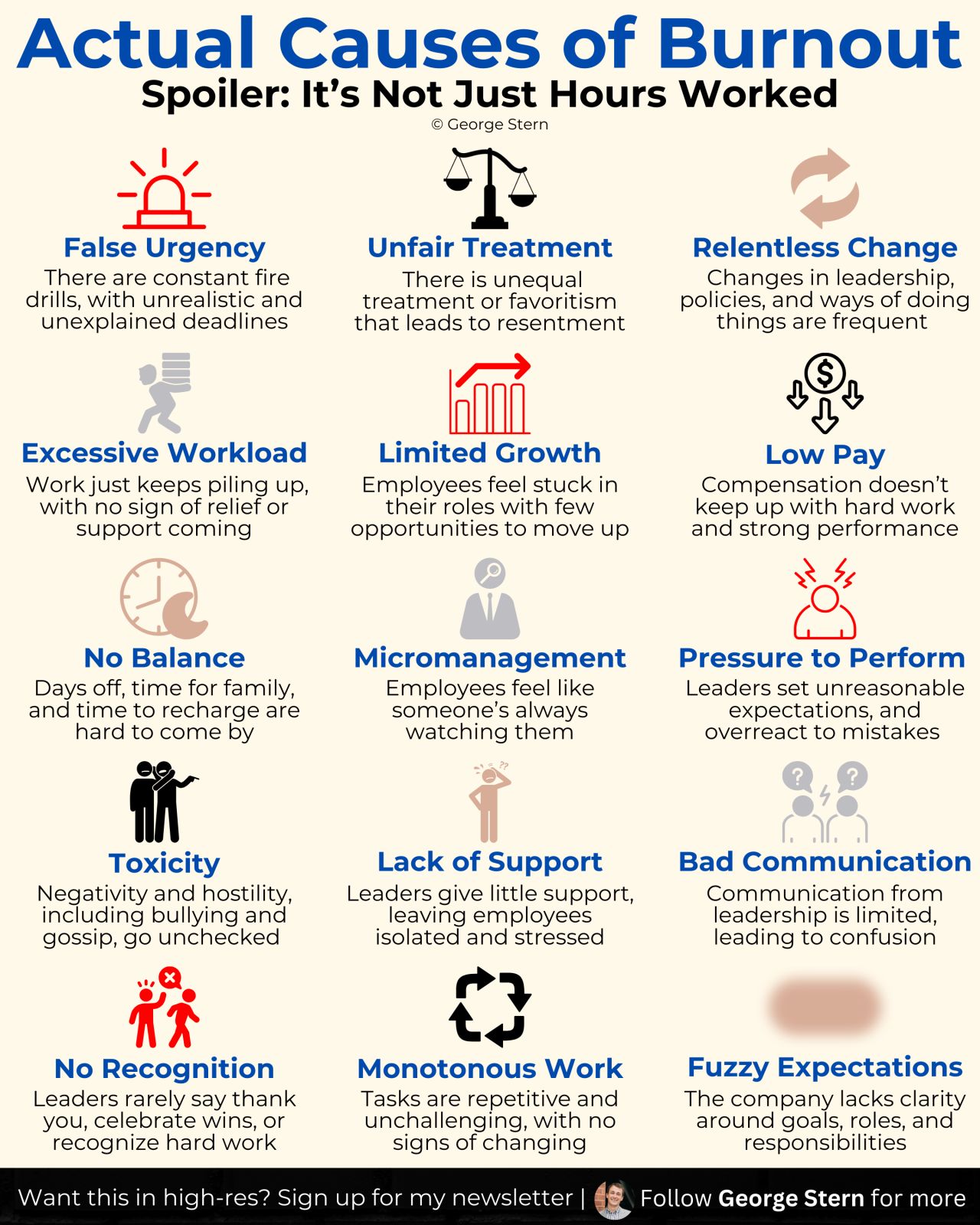Getting back to work after burnout

If you’re feeling stressed, you’re not alone. The Gallup State of the Global Workplace report for 2024 shows that half of the Australians surveyed were experiencing high levels of stress. We were in the top four regions of the world for stress, at levels that impact our ability to perform.
There is an ocean of information out there on how to identify if you’re at risk of burnout, how to prevent it, and what to do about it. But when it is time to go back to work, we can still be overwhelmed by the demands imposed by our responsibilities.
So, how do we go back to work after burnout?
The answer is not as simple as walking back through the door and returning to what we were doing.
- Burnout can take a long time to recover from: we may still be in the middle of it when at work.
- Some people are able to take time off, but are so anxious about returning to the office environment that they make a complete career change.
- Burnout is under-reported. For many people their situation is self-diagnosed, and they are grappling with it alone.
Burnout is chronic stress and cannot be fixed by yoga, a holiday at the beach, or a couple of sessions with a mental health professional. (Though they do make a great start). The underlying conditions that caused burnout in the first place aren't banished by a few sticks of sandalwood incense and a good night’s sleep. The conditions will still be there and they will still affect us when we return, leading us straight back to burnout.
Returning to work requires changes. Either on our behalf, or negotiated with our employer. Some will be temporary while we are still recuperating, others might need to be permanent. It is a three step process:
Step one: identify what contributed to our burnout?
Burnout, after all, is not just overwork. It is a set of chronic stressors that add up over time. The (American) Association for Psychological Science notes it is a combination of workload, control, reward, community, fairness, and values that leads to burnout. Or if you’d prefer a nice infographic, George Stern has this appealing visual:

Step two: identify what needs to change, to stop it happening again?
For instance:
- Experiencing toxicity? — a team charter that includes standards of behaviour and how the group manages discord is helpful. Ask for a transfer to another team or report the behaviour to HR.
- No balance? — try to return to work part time to begin with, and keep the conversation going around appropriate workload levels. Build in a regular check with the entire team. If someone is feeling overworked, then it is likely multiple people are. This provides a clue that the problem is around unrealistic deadlines, or unclear priorities, or lack of visibility and feedback about all the other work that needs to take place to support the delivery of outcomes. For example conversations to set expectations, answering questions from other departments, or dealing with async communication tasks.
Step three: management of burnout itself
Even once the original stressors have been dealt with, the impact on our body and mind can remain for quite some time afterwards. Given the symptoms of burnout overlap with depression, we can have difficulties like poor executive function, reduced memory, or effortful social interactions.
If our job performance relies on these cognitive abilities, arranging accommodations or supports is useful. The database from the American Job Assistance Network is a huge resource, describing disabilities as well as individual symptoms, while providing ideas around accommodations to support impacted areas. For instance: they describe what having executive functioning difficulties may look like, along with a set of possible ideas, processes, tools and accommodations to provide support.
Returning to work after experiencing burnout requires more than just a few relaxation techniques or time off. It involves identifying the root causes of burnout and making necessary changes, whether they be temporary or permanent. Returning to work requires that we advocate for ourselves, manage up, and set clear boundaries.
Self-awareness and self-compassion are essential tools in managing stress and recovering from burnout
- Self-awareness involves recognising our emotions, thoughts, and physical sensations, allowing us to identify patterns and triggers that contribute to stress and burnout.
- Self-compassion means treating ourselves with kindness, understanding, and empathy during challenging times, helping us cope more effectively with the emotional toll of burnout. It grants us freedom from guilt as we negotiate work arrangements that are in service of our long term wellbeing.